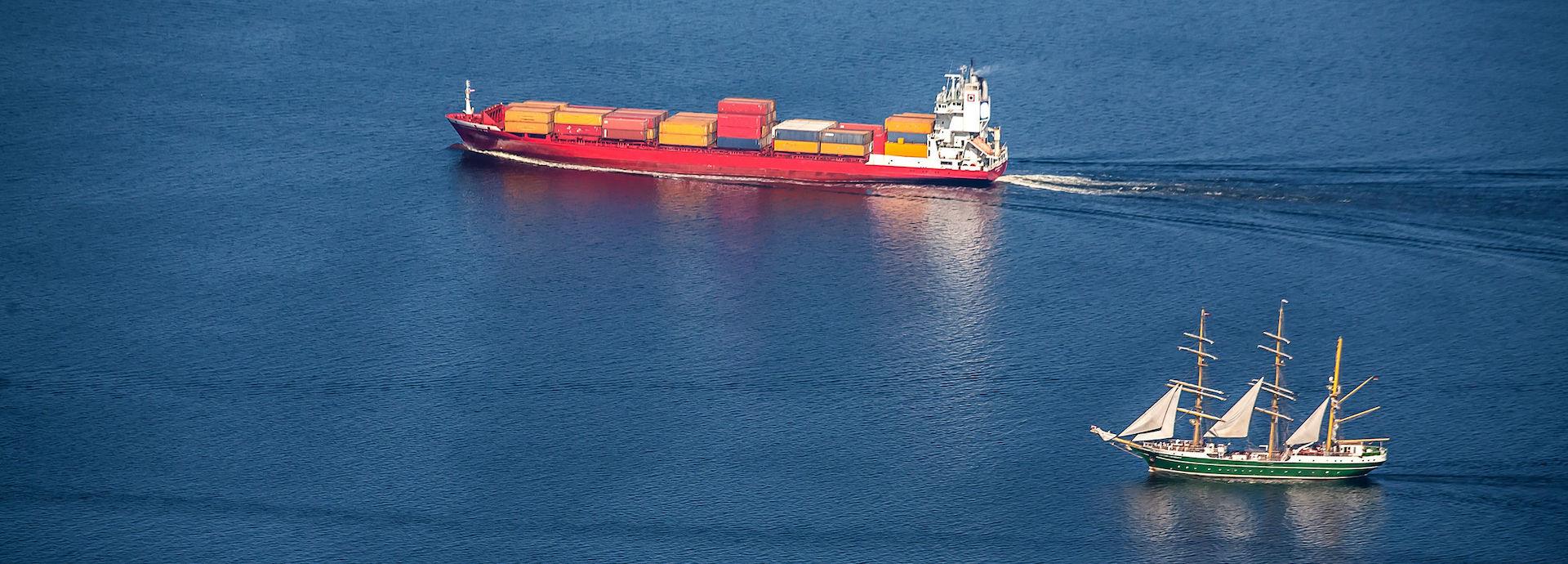

The SeaTech project, a European Union-funded collaboration, could be a gamechanger in the marine sector, producing vast reductions in fuel consumption and gas emissions.
In June of this year, Wärtsilä officially launched its SeaTech project alongside six partner companies and academic institutions. The aim is to research, develop, and integrate required technologies that will result in emission reduction levels never before seen by the shipping industry.
Those behind the project believe that, in addition to a 30% reduction in fuel consumption, they also can cut emissions of sulphur oxides and nitrogen oxides by 99%, all but eliminating these gases. Further, a 94% reduction in particulate matter emissions and a 46% drop in CO2 reductions could well set shipping on a course towards its ultimate goal of zero carbon emissions.
Harnessing wave energy
The project hopes to achieve these results by harnessing research and developing fuel-efficient propulsion methods through Wärtsilä’s existing symbiotic ship engine and propulsion technologies, which will be combined to vastly reduce emissions. The design involves incredibly high conversion efficiency via the complete control of a ship’s engine.
The propulsion system itself will consist of a bio-mimetic dynamic wing, which is mounted at the bow of the vessel. This will allow for augmented propulsion when the vessel has to navigate moderate and heavy sea conditions. Through the capture of this wave energy, extra thrust is produced, and the motion of the ship can be dampened.
Jonas Åkerman, Director of Research & Technology Department, Wärtsilä Marine, says of the project’s conception: ”The initial phase was very much conceptualised internally at Wärtsilä and the basic trigger was very much the trigger of two current innovations – wave capturing mechanism and the engine development – that we are working on. So, to combine these and see the benefit was the trigger for the project.”
The venture is so important that Wärtsilä reached out and put together a collaboration team it hopes will develop the technology to revolutionise the marine sector. The pan-European unit is made up of a Norwegian firm Utkilen AS, Dutch company Huygens Engineer BV and Liewnthal Electronics from Estonia, as well as three academic institutions – the National Technical University of Athens, the National UiT The Arctic University of Norway, and the UK’s University of Southampton. This will be the first time that Wärtsilä has worked with these partners in such a large scale project.
The case for open collaboration
“To achieve a higher technical readiness level across novel technologies, academia and business industries, we should be collaborating in research projects. We utilise AI, machine learning, and data science to integrate the novel technologies proposed in this project so that knowledge can be used to combine various emission reduction technologies in the future even in laboratory conditions. It is not an easy task, but I am convinced that we will succeed in this project,” explains Prasad Perera from UiT, speaking about the expertise his institution will bring to the table.
Initially, the proposed technologies will be run as separate prototypes. This is where the need for combining such technologies is required.
“We will integrate the Wärtsilä engine and bio-mimetic dynamic wing technologies through big data and then quantify the outcome in a data science environment. As both of these technologies need to be tested in laboratory conditions as prototypes, we have proposed collecting large-scale data sets and then utilising them for selected vessels using an advanced data analytic framework, which is supported by AI and machine learning algorithms. Once you have done this, you can introduce additional navigation conditions, such as environmental conditions, into the same framework,” says Perera.
“Eventually, the integration of these technologies will be quantified, with respect to ship energy efficiency and emission considerations, by having a selected set of KPIs related to propulsion power versus emissions, as well as system installation, operational maintenance and cost versus benefit, etc.,” he adds.
Åkerman is aware that this project is a huge undertaking, but has full belief in the projected figures. “They are fully realistic, of course, but it depends on the reference points. These days, ships have different profiles and operate in different conditions, so this will have an impact. Therefore, we must use a middle-of-the-road case to achieve the best results. Having said that, we expect to achieve these aims.”
From prototyping to market by 2025
The project is scheduled to last for three years. Following that, Wärtsilä hopes to roll out the commercialisation of the technology across the European and Asian short-sea markets in 2025, which will be followed by an expansion into the deep-sea market in the middle of the decade. It has been estimated that even if only 10% of Europe’s short-service vessels are retrofitted with SeaTech technology, emissions would be reduced by the equivalent of 200,000 passenger cars each year. This is on top of health care savings and the indirect creation of jobs within the industry.
Additionally, return on investment for those who purchase the equipment is expected to be around 400%, due to the savings in both fuel consumption and operational costs. Retrofitting and subsequent maintenance will also be greatly reduced and simplified.
Wärtsilä is not content to simply wait around in the hope that new technology will come around. By being at the forefront of the revolution, it hopes to be able to achieve the balance required to move forward.
“This is our industry, so we need to be at the forefront, and we are. We are very aware that there needs to be a combination of environmental drive and sound commercial solutions. If you have good solutions and the competence to do better things, then you are in a position to do better business, both for your customers and yourselves. Therefore, we see this both as a business opportunity and a chance to improve how we power ships while contributing to a more sustainable society”, concludes Åkerman.”

